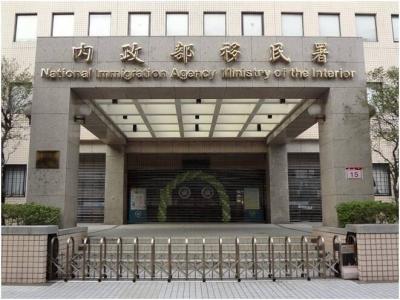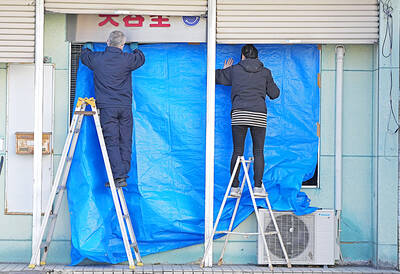The Liu Dui Culture Research Association on Saturday unveiled the nation’s first domestically compiled lexicon of Hakka-language words in the Liu Dui dialect, an effort that took a decade of work and cost about NT$7 million (US$233,085 at the current exchange rate).
The two-volume, 1,400-page lexicon collected more than 20,000 phrases and words, and is estimated to be of great value in helping people learn the Liu Dui dialect and culture, the association said.
It could also become a reference book for teachers, the association added.

Photo: Lo Hsin-chen, Taipei Times
The lexicon collected phrases and common words used in daily speech, as well as local sayings, phrases and words describing the history of the area and the local life, it said.
Association Director Tseng Tsai-chin (曾彩金), a retired teacher, served as the editor-in-chief of the project.
Reached for comment yesterday, Tseng said he wanted to compile the lexicon because he thought that the Sisian (四縣) dialect, which is the main dialectal group to which the Liu Dui subgroup belongs, was underused at meetings or when presiding as a judge over events related to the Hakka language.
The two most-used dialectal groups out of the five groups of the Hakka language used in Taiwan are the Sisian, which is more prevalent in southern Taiwan, and the Hailu (海陸), which is more prevalent in the north.
The other three groups are the Dapu (大埔), Raoping (饒平) and Jhaoan (詔安).
The 12 Hakka-speaking townships spread across Pingtung County and Kaohsiung all speak the Liu Dui subdialect, which can be further subdivided into three smaller groups — one used by those in Neipu (內埔), Wanluan (萬巒), Jhutian (竹田) and Linluo (麟洛) townships in Pingtung; the second used in Gaoshu (高樹), Changjhih (長治), Jiadong (佳冬) and Sinpi (新埤) townships; and the third used in the Mainong (美濃), Shanlin (杉林) and Liouguei (六龜) districts of Kaohsiung.
This is evidence of the richness of the Liu Dui subdialect and one of the unique characteristics of the Sisian dialect, Tseng said.
The association’s funding mainly came from the Hakka Affairs Council, he said.
Having completed multiple volumes of Liu Dui-centric words and vocabulary, he said that he reorganized them into a lexicon, as multiple volumes of vocabulary would prove difficult to use.
While the project was a part of Tseng’s “Liu Dui to save its own dialect” project, he said he was astonished and glad to receive help from Hakka people nationwide, adding that the encouragement also greatly motivated the project’s six editors.
A total of 1,200 copies were produced for the first print, but the association was left with only 200 sets after gifting copies to people who helped produce the lexicon, it said.
The sets are priced at NT$2,000 each and come with a CD to help the learning process, the association said.

A small number of Taiwanese this year lost their citizenship rights after traveling in China and obtaining a one-time Chinese passport to cross the border into Russia, a source said today. The people signed up through Chinese travel agencies for tours of neighboring Russia with companies claiming they could obtain Russian visas and fast-track border clearance, the source said on condition of anonymity. The travelers were actually issued one-time-use Chinese passports, they said. Taiwanese are prohibited from holding a Chinese passport or household registration. If found to have a Chinese ID, they may lose their resident status under Article 9-1

Taiwanese were praised for their composure after a video filmed by Taiwanese tourists capturing the moment a magnitude 7.5 earthquake struck Japan’s Aomori Prefecture went viral on social media. The video shows a hotel room shaking violently amid Monday’s quake, with objects falling to the ground. Two Taiwanese began filming with their mobile phones, while two others held the sides of a TV to prevent it from falling. When the shaking stopped, the pair calmly took down the TV and laid it flat on a tatami mat, the video shows. The video also captured the group talking about the safety of their companions bathing

PROBLEMATIC APP: Citing more than 1,000 fraud cases, the government is taking the app down for a year, but opposition voices are calling it censorship Chinese Nationalist Party (KMT) Chairwoman Cheng Li-wun (鄭麗文) yesterday decried a government plan to suspend access to Chinese social media platform Xiaohongshu (小紅書) for one year as censorship, while the Presidential Office backed the plan. The Ministry of the Interior on Thursday cited security risks and accusations that the Instagram-like app, known as Rednote in English, had figured in more than 1,700 fraud cases since last year. The company, which has about 3 million users in Taiwan, has not yet responded to requests for comment. “Many people online are already asking ‘How to climb over the firewall to access Xiaohongshu,’” Cheng posted on

A classified Pentagon-produced, multiyear assessment — the Overmatch brief — highlighted unreported Chinese capabilities to destroy US military assets and identified US supply chain choke points, painting a disturbing picture of waning US military might, a New York Times editorial published on Monday said. US Secretary of Defense Pete Hegseth’s comments in November last year that “we lose every time” in Pentagon-conducted war games pitting the US against China further highlighted the uncertainty about the US’ capability to intervene in the event of a Chinese invasion of Taiwan. “It shows the Pentagon’s overreliance on expensive, vulnerable weapons as adversaries field cheap, technologically